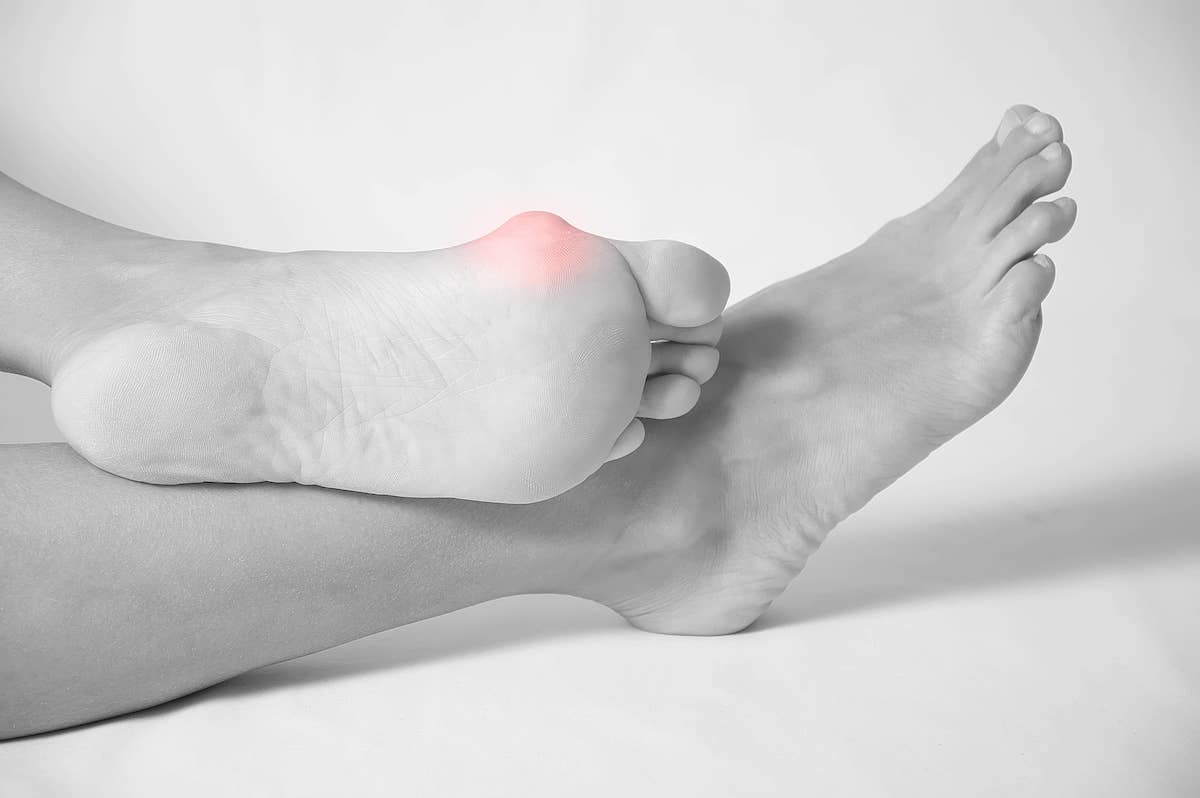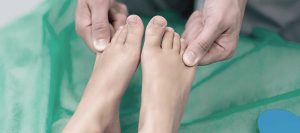
When you see the suffix “-ette” at the end of a word, it usually means something smaller or something related to women only – kitchenette, cigarette, bachelorette, majorette, and so on.
But when it comes to bunions and bunionettes, the latter can cause the same big problems as the former and affect men and women alike.
These often-painful and chronic toe conditions share many similarities in causes, symptoms, and treatments, but the primary distinction between bunions and bunionettes is that they develop on opposite sides of the foot.
What Exactly Is A Bunion?
Bunions, also called hallux valgus, are typically a problem with and around the big toe.
Those toes contain two important joints. The metatarsophalangeal joint (MTP) is the larger of the two and connects the first long bone of the foot (the metatarsal) to the first bone of the toe (the phalanx).
A bunion develops when the MTP moves out of its normal alignment, shifting the metatarsal bone towards the inside of the foot.
This movement also angles the phalanx bones of the big toe inward towards the second toe.
As time passes and the bunion develops over months or even years, a painful bony bump appearing red and swollen will emerge on the inside of the foot at the site of the joint.
As they progress, bunions can make walking and standing painful and limit the kinds of shoes you can wear.
Making things worse, the prominence and pain of a bunion usually get more intense over time if left untreated.
What Exactly Is A Bunionette?
As noted, a bunionette, also called a tailor’s bunion, develops on the outside of the foot at the base of the fifth metatarsal in the little toe.
That toe has three phalanx bones. As such, a bunionette forms three joints down form the top of the toe on the outer side of the foot, causing the bone to protrude from the metatarsophalangeal joint and point into the neighboring fourth toe, just like the big toe points into its neighbor when a bunion develops.
As with bunions, bunionettes can cause significant pain and discomfort, especially when wearing shoes that put pressure on the bump
Genetics plays a big role in why bunions and bunionettes develop, so if one of your parents developed one or both of these problems, you likely have a higher chance of getting one as well.
For other people, usually women, wearing shoes with a narrow, pointed toe box can push the toes into an unnatural position and put severe pressure on the toe joint.
Inflammatory conditions such as rheumatoid arthritis can also cause bunions.
Fortunately, there are several treatment options for bunions and bunionettes.
These can range from at-home remedies and lifestyle changes like looser fitting footwear, custom orthotics, and anti-inflammatory drugs that can alleviate pain and pressure to surgery for more severe and advanced cases that can fix the underlying joint problem once and for all.
At JAWS Podiatry, we always prefer non-surgical or minimally invasive treatments for bunions whenever possible and effective.
Is a Bunion or Bunionette Putting a Crimp In Your Step?
Call JAWS Podiatry Today to Schedule an Appointment!
We utilize the most advanced and non-invasive techniques to reduce pain and speed recovery for individuals suffering from bunions, bunionettes and other foot and ankle problems.
If you’d like to learn more about the innovative and effective treatments we provide or how we can help you with your foot and ankle issues, please call us today at (954) 922-7333 or send our team a message to schedule a consultation.
- The Life-Changing Power of Cosmetic Foot Surgery - February 27, 2023
- What Are The Most Common Pediatric Foot Conditions? - October 5, 2020
- 4 Important Things To Know Before Having Foot Surgery - September 21, 2020



